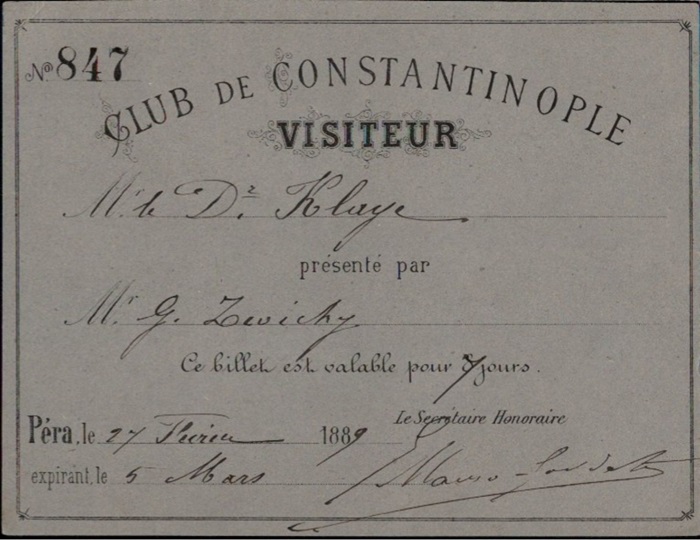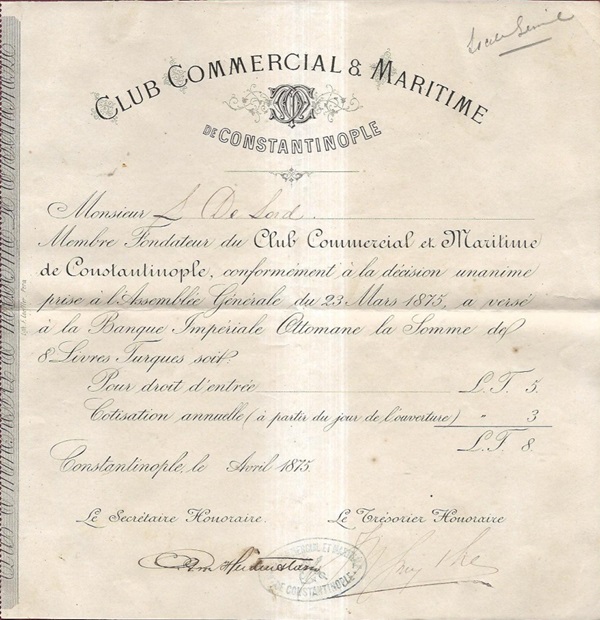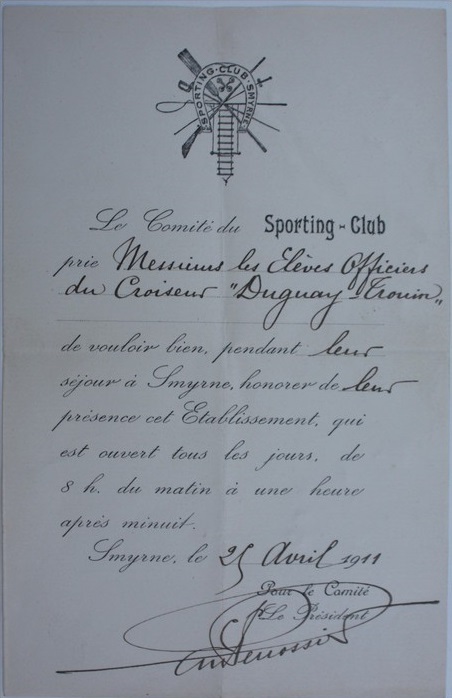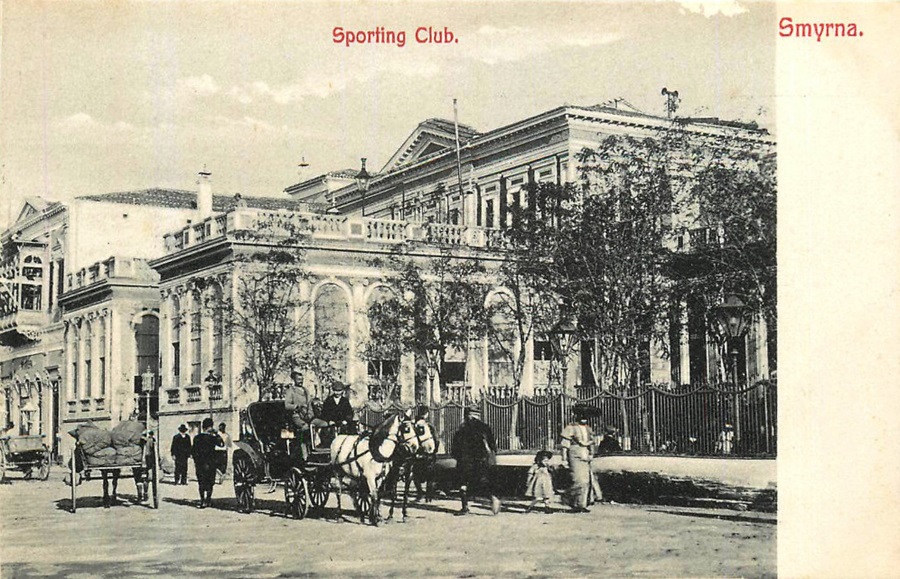The Legacies
Architectural heritage | Literature | Fine arts | Music | Sports | Intellectual
life
The Levantines were not just merchants out to make as much money ‘while the going was good’ but had their own clubs and societies such as their branch of the ‘Society of Dilettanti’, making important contribution to the then infant field of archaeology, headed by the British consul for Smyrna (more probably a consular official) John Cleland, who later became a scandalous writer with ‘Fanny Hill’. Information on these intellectual associations is hard to come by and one that is mysterious is ‘Institut Scientifique Européen’. This grouping was obviously worthy enough to be reformed later in Paris as told by this bronze medal.
 |
 |
The British ambassador
to Constantinople (1877-80), Sir
Austen Henry Layard, 1817-94, was an archaeologist as well as a diplomat.
Between 1842 and 1851 he explored and excavated in Mesopotamia, especially
at Nineveh. In the period from 1852 to 1869 he held various government
positions, including those of under secretary of foreign affairs and chief
commissioner of works. His fine collections are in the Assyrian section
of the British Museum. Among his books are Discoveries in the Ruins of
Nineveh and Babylon (1853) and his autobiography (1903).
A Levantine buried in Boudjah cemetery is Henry Perigal Borell (1795-1851), who did his own archaeological studies, and his note book has been examined recently by a scholar, David Whitehead of Queen’s University in Belfast, illuminating his life and works, and the paper titled ‘From Smyrna to Stewartstown, Ireland: A numistatist’s epigraphic notebook’, is viewable here:
The British Consul for Smyrna of the time (1703-1716), was a William Sherard, who had a botanic garden for his studies in one of the outlying villages, Seydiköy, and later became an eminent botanist. The story of this lost garden is penned by the late researcher Evelyn L. Kalças, viewable here:
A Levantine buried in Boudjah cemetery is Henry Perigal Borell (1795-1851), who did his own archaeological studies, and his note book has been examined recently by a scholar, David Whitehead of Queen’s University in Belfast, illuminating his life and works, and the paper titled ‘From Smyrna to Stewartstown, Ireland: A numistatist’s epigraphic notebook’, is viewable here:
The British Consul for Smyrna of the time (1703-1716), was a William Sherard, who had a botanic garden for his studies in one of the outlying villages, Seydiköy, and later became an eminent botanist. The story of this lost garden is penned by the late researcher Evelyn L. Kalças, viewable here:
 |
A token from another little known club.
 |
A similar token from the same club, but dual spelling mistake suggests it was commisioned to non-English speakers who created this. The ‘20’ may refer to a monetary value, possibly exchangable against drinks at the bar?
 |
A bill announcement in Italian and Greek: ‘Euterpe Theatre.
Tomorrow evening Mr. Lewis (Professor Lees in the Italian version), together with his three sons, will perform various new exercises, completely different from everything he has performed until today, and Mr. George Lewis, one of his three sons, will appear on his terrestrial globe.
The performance will start at 8:30 exactly.
Smyrna, 12-24 March 1851’.
The Euterpe Theatre, was built in 1841 and was located in Rue des Roses. It had 300 seats and 30 boxes in two rows, and its impressario (director) was the Italian Giuseppe Camilleri. The opening was in February 1842, with a performance by an Italian opera troupe. There were performances in this theatre until 1851 at least, but by 1857 the theatre didn’t exist any more - information courtesy of George Poulimenos.
Tomorrow evening Mr. Lewis (Professor Lees in the Italian version), together with his three sons, will perform various new exercises, completely different from everything he has performed until today, and Mr. George Lewis, one of his three sons, will appear on his terrestrial globe.
The performance will start at 8:30 exactly.
Smyrna, 12-24 March 1851’.
The Euterpe Theatre, was built in 1841 and was located in Rue des Roses. It had 300 seats and 30 boxes in two rows, and its impressario (director) was the Italian Giuseppe Camilleri. The opening was in February 1842, with a performance by an Italian opera troupe. There were performances in this theatre until 1851 at least, but by 1857 the theatre didn’t exist any more - information courtesy of George Poulimenos.
 |
A temporary membership card for a Mr Gaudin issued 1894 by the ‘Nouveau Club’ of Smyrna, signed by the committee members X. Lattry and John (?) Boscovitch.
This is a club established in 1886 by members of the Cercle Européen and the Club Hellenique (Casino Grec) who had left these clubs. It was located in Passage Homère just behind the Kraemer Hotel building, which at that time was not a hotel but housed the Club Hellenique. The club is indicated as New Club in the Goad map. It was later (after 1914) merged with Cercle Européen to form the Club de Smyrne. One of the two commissioners signing is the Greek architect Xenophon Lattry, the one who built the St. Photini belfry, and the other being John Boscovitch, probably a Levantine of Croatian origin. - information courtesy of George Poulimenos.
This is a club established in 1886 by members of the Cercle Européen and the Club Hellenique (Casino Grec) who had left these clubs. It was located in Passage Homère just behind the Kraemer Hotel building, which at that time was not a hotel but housed the Club Hellenique. The club is indicated as New Club in the Goad map. It was later (after 1914) merged with Cercle Européen to form the Club de Smyrne. One of the two commissioners signing is the Greek architect Xenophon Lattry, the one who built the St. Photini belfry, and the other being John Boscovitch, probably a Levantine of Croatian origin. - information courtesy of George Poulimenos.
 |
The same Mr Gaudin, described as an engineer from Smyrna, guest membership card for the Constantinople Club from 1895.
 |
 |
 |
Unknown clubs of Constantinople.
 |
The Sporting Club of Smyrna invitation to visit to the crew a visiting French battleship from 1911.
 |